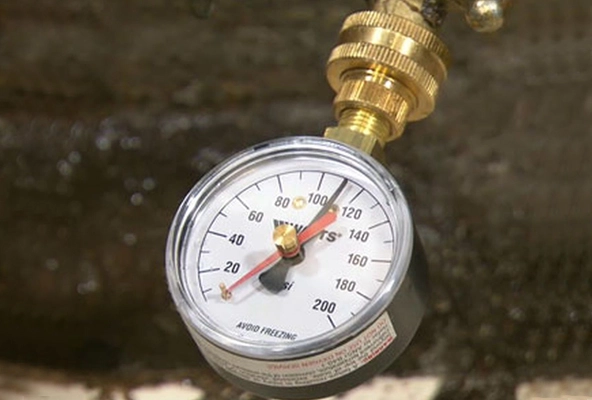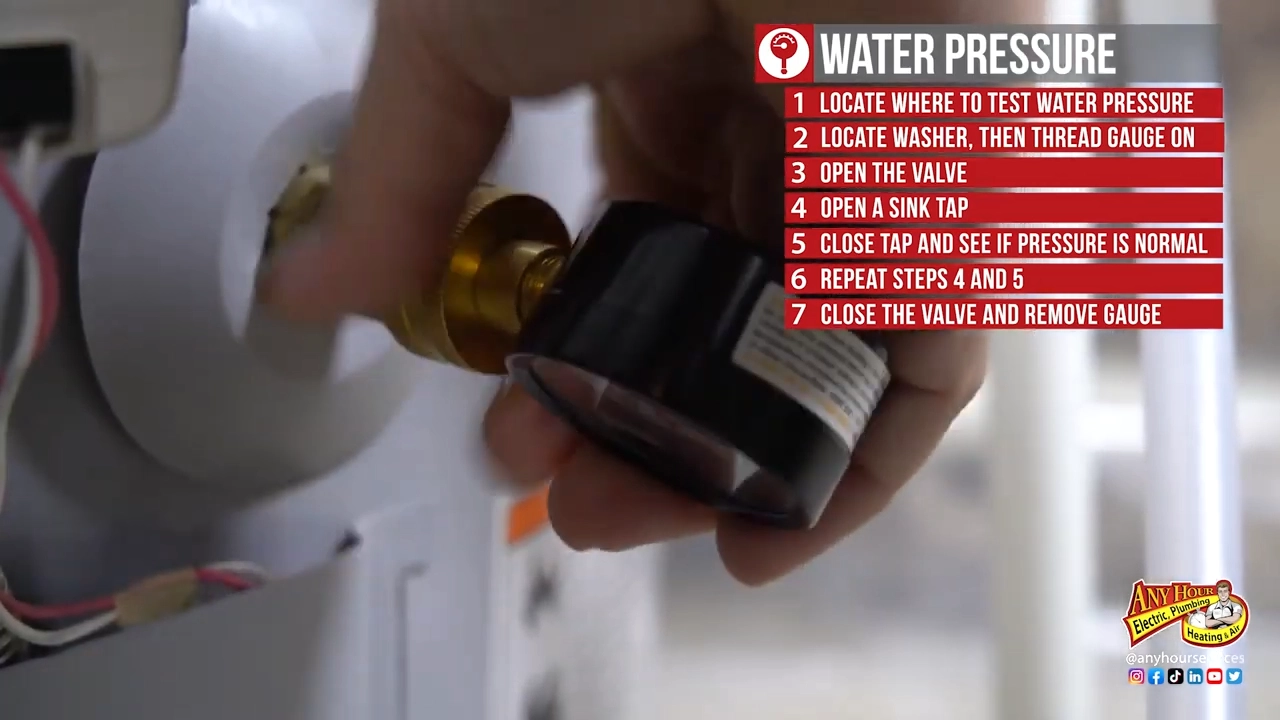Water pressure might not be something you think about much, or even notice unless it’s too low. But a much more common issue is water pressure that’s too high. The water pressure from the city is often too high and gets reduced to a lower pressure once it gets to your home. High water pressure can leaks or parts to fail. In this article, we’re going to teach you how to test your home’s water pressure. That way your plumbing fixtures last as long as they’re supposed to.
All you need to test your water pressure is a pressure gauge that can screw onto a spigot near your main water line. They’re sold at most hardware stores for around $10. There are versions that have one needle or two, but it doesn’t matter which one you go with. Once you have a water pressure gauge, you'll need to locate where you want to test your water pressure.
We often recommend that people test the water heater. If your water heater uses a plastic shutoff valve, you’ll want to avoid it since older plastic is more likely it is to break. Your washing machine hookup is a great place to use instead. Make sure the washer is inside the pressure gauge to prevent any leaks. Then you can thread the pressure gauge onto the valve. If you have a rubber washer, tightening it by hand should be enough.

Once the pressure gauge is in place, you can open the valve. If you have a PRV installed into your plumbing system, the pressure should be somewhere between 50 - 70 psi. Now you can go open a sink tap. Make sure to open the hot water side if you’re testing the water heater. When you go back to your pressure gauge, you should notice a pressure drop, which shouldn’t be more than 15 pounds.
We recommend testing the pressure one more time to account for thermal expansion. In an ideal situation, the numbers should be about the same for the two different tests. If they aren’t, you might have an issue and want to get a plumber out to take a look. Once that's done, you can close the valve and remove the gauge. If you were testing at your washing machine, remember to reconnect the hose.

This is a pretty easy project for most homeowners to try. If you try this and things don't make sense, or if you feel overwhelmed, any plumber should be able to run this test for you. If you don’t have a plumber you trust, Any Hour Services would be happy to help. You can give us a call or schedule an appointment online.